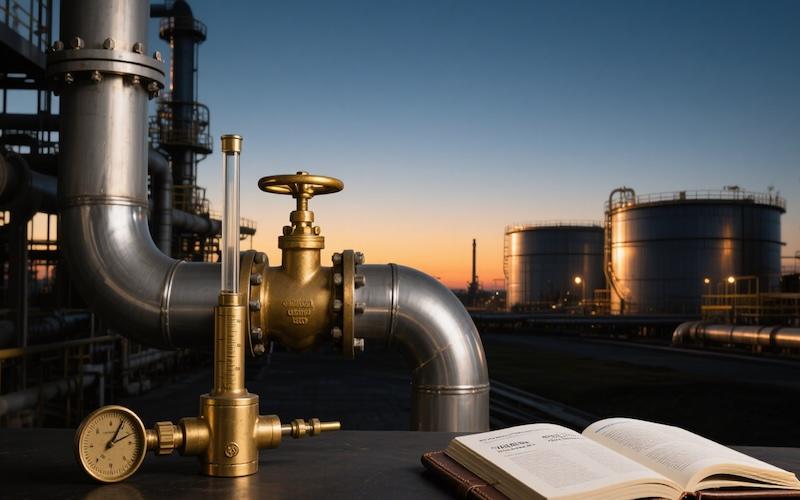The oil market's "triple whammy": OPEC+, China, and geopolitical uncertainty
2025-10-03 01:12:30

While it's easy to understand the impact of these factors, predicting their next move is a far more complex proposition. After all, these three variables themselves are inherently fast-moving and unpredictable, making market forecasting even more complex.
Recently, at the Energy Market Forum held in Fujairah, UAE (a core global crude oil storage and transportation hub), industry experts engaged in a heated discussion on this topic. While both bullish and bearish views were supported within the forum, it was difficult for anyone to reach a clear-cut conclusion about the market outlook for the next two to three quarters. More importantly, the impact of these three factors on oil prices often conflict with each other. Combined with the pressures of a slowing global economy, escalating trade wars, and energy transitions, oil prices are likely to come under further pressure in 2025. Currently, the average price of Brent crude oil futures remains in the $65-70 per barrel range, and the market generally expects it to fall to around $60 by the end of the year, with a higher probability of fluctuating between $50 and $60 in 2026.
OPEC+ production cuts are easing: bearish in theory, but the actual effect is uncertain
OPEC+ has been gradually rolling back its previously implemented voluntary production cuts of 2.2 million barrels per day (bpd), with plans to add an additional 137,000 bpd by October. In theory, this increase in supply will inevitably put downward pressure on oil prices—after all, whether global demand can keep up with this increase remains questionable.
The forecast of the International Energy Agency (IEA) also confirms the weakness on the demand side: global crude oil demand is expected to grow by only 700,000 barrels per day in 2025, which is far lower than 2.3 million barrels per day in 2023. The main reason behind this is the slowdown in demand from China and India, the two major demand countries.
But the reality is far more complex than theory. OPEC+'s actual production increases have consistently fallen short of their planned targets. Analysts estimate that since easing production cuts in April, eight core members, including Saudi Arabia and Iraq, have increased production by only 75% of their target, or approximately 375,000 barrels per day (bpd), rather than the planned 500,000 bpd. This is due to infrastructure bottlenecks in countries like Algeria and Kazakhstan, which have been unable to keep pace with their quota increases. The latest data from S&P Global also shows that OPEC+'s actual production increase in September was approximately 700,000 bpd, still below market expectations. Delayed maintenance schedules at oil fields in Russia and Oman were a key factor.
Because of this, the theoretically bearish relaxation of production cuts has actually supported oil prices. The market is also cautious about the OPEC+ meeting this weekend—traders are no longer solely focused on changes in quotas, but are more concerned about the actual increase in supply that will ultimately be implemented.
It's worth noting that the supply growth from non-OPEC+ countries is quietly changing the market landscape. The U.S. Energy Information Administration (EIA) predicts that U.S. shale oil production will reach 13.5 million barrels per day in 2025, a record high. However, if oil prices remain low, production growth may be limited to less than 1% in 2026. If OPEC+ continues to increase production, the global crude oil supply surplus could reach 1.7 million barrels per day in 2025, which would undoubtedly further depress oil prices.
China's inventory: short-term support for oil prices, long-term may be close to the "peak"
Changes in China's crude oil inventories are another key variable influencing current oil prices. Since 2025, China has absorbed excess crude oil supply through large-scale imports and inventory accumulation, which has become a key support for Brent crude oil prices to stabilize in the $65-70 per barrel range.
According to IEA estimates, China's crude oil inventories have increased by approximately 900,000 barrels per day this year, reaching a cumulative increase of 106 million barrels, with this growth concentrated primarily in the second quarter. This is driven by China's consistent strategy of hoarding oil at low prices—whenever oil prices fall to around $60 per barrel, China tends to increase imports to replenish its inventory.
The problem, however, is the lack of transparency in China's inventory data, making subsequent moves difficult to predict. Data from the London Stock Exchange Group (LSEG) shows that China's crude oil imports fell to 10.83 million barrels per day in September, a 7% decrease from 11.65 million barrels per day in August and the lowest level since February of this year. This change is likely related to the brief oil price spike triggered by the Israel-Iran conflict in June. The crude oil arriving in September was largely contracted during the period of high oil prices, which naturally dampened import demand.
Even more alarming is that China's crude oil demand may be nearing its peak. With electric vehicle penetration expected to reach 40% in China by 2025, coupled with the limited effectiveness of economic stimulus policies, crude oil demand growth has slowed significantly. Reuters forecasts that China's average crude oil imports may fall to 11 million barrels per day in 2025, down from 11.4 million barrels per day in 2024. UBS has even warned that if the Sino-US trade war escalates further, Chinese refinery margins could be further compressed, with imports potentially falling below 10 million barrels per day, further straining global oversupply.
Geopolitics: Multiple risks are superimposed, and the trade war has become a new "spoiler"
Geopolitics remains the biggest uncertainty factor in the crude oil market. Since 2025, the brief conflict between Israel and Iran has directly pushed up oil prices. The drone attack launched by Ukraine on a Russian refinery also disrupted regional supply. According to Bloomberg, the attack reduced Russia's refining capacity by approximately 10%, leading to a decrease in refined oil exports. However, surprisingly, Russian crude oil exports have actually increased. This paradoxical development has directly boosted global refining margins.
Furthermore, the trade war reignited by US President Trump is becoming a new risk factor—particularly the tariff threats against Canada, Mexico, and China—further exacerbating global economic uncertainty. JPMorgan estimates that if 100% tariffs are ultimately implemented, global crude oil demand could fall by 300,000 barrels per day. Furthermore, tariffs could also push up the US dollar index, indirectly suppressing oil prices.
Further complicating matters, sanctions and energy transitions are exacerbating uncertainty. The EU has announced plans to completely ban imports of Russian crude oil derivatives starting in 2026. This policy could reduce global supply by 500,000 to 1 million barrels per day, but the market has already partially priced this in. On the other hand, further tightening of sanctions on Iran and Venezuela could trigger short-term supply shortages, potentially even temporarily surging oil prices to $80 per barrel.
At the same time, the pressure of energy transition is gradually emerging. The IEA predicts that global refinery throughput will reach 83.5 million barrels per day in 2025. However, the rapid adoption of electric vehicles and renewable energy will continue to constrain crude oil demand growth. Global crude oil inventories may rise above the five-year average (approximately 67 million barrels), putting long-term downward pressure on oil prices.
Market Outlook: Oil prices tend to decline amidst a period of caution amidst multiple risks
The combination of these three factors, along with a slowing global economy and trade frictions, has created maximum volatility in the crude oil market by 2025. A recent Reuters poll of 32 analysts predicts the average Brent crude price will be $67.61 per barrel in 2025, a 2% decrease from the previous month. The oversupply forecast is the core reason for the downward revision.
Different institutions have also given predictions for extreme scenarios: RBC Capital pointed out that if geopolitical conflicts gradually ease, oil prices may fall to $55 per barrel; but once the situation in the Middle East worsens, oil prices may rise to $80 per barrel in the short term.
Of particular note is the long-term impact of the energy transition, which cannot be ignored. Bloomberg New Energy Finance (BNEF) predicts that by 2030, driven by electric vehicles and green energy, global crude oil demand could fall to 95 million barrels per day. This means that the current high inventories and oversupply may not be a short-term phenomenon, but rather the beginning of a long-term trend, leading to a gradual downward shift in oil prices.
At present, traders are generally choosing to "wait and see" - waiting for the final outcome of the October OPEC+ meeting while closely monitoring the progress of the US-China trade negotiations. The market may find a new balance amidst the fluctuations, but overall, the downside risks facing oil prices are significantly greater.
Summarize
The crude oil market in 2025 is suffering from a "triple blow": OPEC+'s production increase is less than expected, China's demand growth is approaching its ceiling, geopolitics and trade wars are intertwined and fermenting, and coupled with the long-term pressure of energy transformation, oil price trends have become unprecedentedly complex.
In the short term, Brent crude oil prices are likely to fluctuate between $60 and $70 per barrel; however, if the oversupply continues to worsen, the average price could fall to $50-60 per barrel by 2026. To navigate this volatile market, investors must closely monitor three key indicators: actual OPEC+ production, China's crude oil import data, and geopolitical dynamics.
After all, the current oil price fluctuations are no longer just a reflection of short-term market supply and demand, but also reflect the profound reshaping of the global energy landscape.
- Risk Warning and Disclaimer
- The market involves risk, and trading may not be suitable for all investors. This article is for reference only and does not constitute personal investment advice, nor does it take into account certain users’ specific investment objectives, financial situation, or other needs. Any investment decisions made based on this information are at your own risk.





















